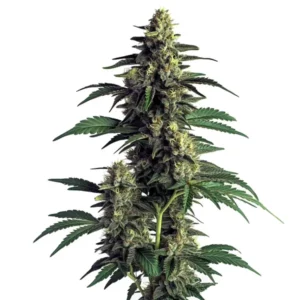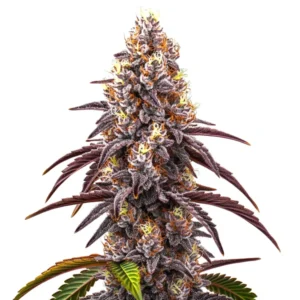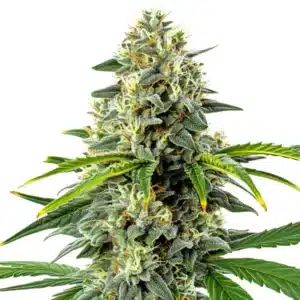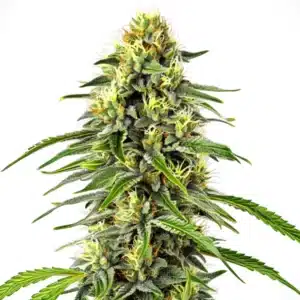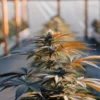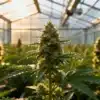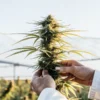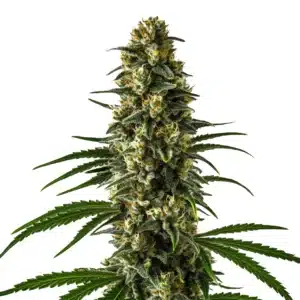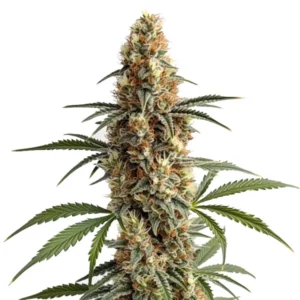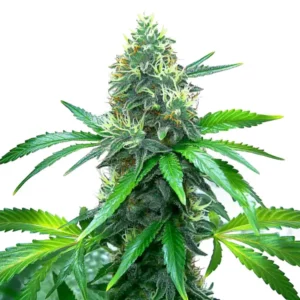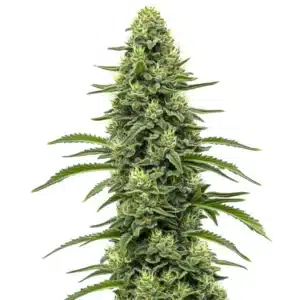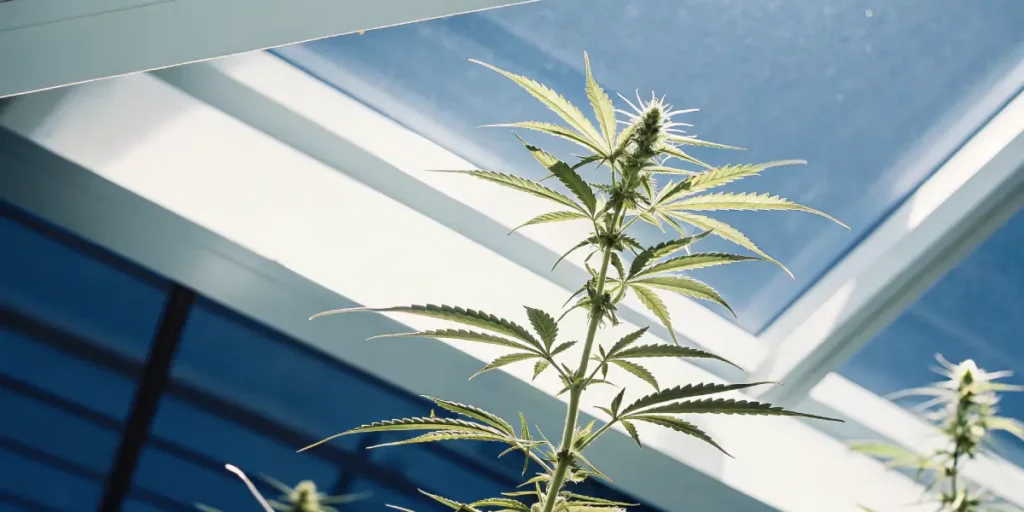
Can ROS Improve Cannabinoid Production?
Reactive Oxygen Species (ROS) might sound like a mouthful, but these tiny molecules are shaking up the world of cannabis cultivation. If you’re wondering whether ROS can improve cannabinoid production, you’re not alone. Many growers are curious about how ROS affects cannabinoid synthesis and what this means for their crops.
Imagine ROS as nature’s way of keeping plants on their toes. These molecules are produced naturally in plants as a response to stress. Think of it like a workout for your plants; a bit of stress can actually make them stronger. But, like any workout, balance is key. Too much ROS can be harmful, but the right amount can enhance cannabinoid production with ROS playing a crucial role.
Recommended Strains
Northern Lights
|
|
THC | 17% (Medium) |
|
|
Type | Feminized |
|
|
Yield | Medium |
|
|
Phenotype | 90% Indica / 10% Sativa |
Blue Dream
|
|
THC | 17% - 24% (Medium) |
|
|
Type | Feminized |
|
|
Yield | High |
|
|
Phenotype | 50% Indica / 50% Sativa |
For both first-time buyers and seasoned growers, knowing ROS’s role in cannabis cultivation could be the key to unlocking higher yields and richer cannabinoid profiles. By learning how ROS can improve cannabinoid production, you can make informed decisions about your growing techniques and strain choices.
How ROS Affects Cannabinoid Synthesis
ROS influence on cannabinoid levels is a topic of growing interest. These molecules are produced when plants are under stress, such as exposure to UV light, drought, or nutrient deficiencies. When managed properly, this stress response can trigger the plant’s defense mechanisms, leading to an increase in cannabinoid production.
Think of ROS as the plant’s personal trainer. When a plant encounters stress, ROS are produced, signaling the plant to ramp up its defenses. This increase in defense often includes boosted cannabinoid synthesis. For example, strains like Blue Dream, available at Blimburn Seeds, have shown improved yields when grown under controlled stress conditions that encourage ROS production.
The knowing of how ROS affects cannabinoid synthesis is still evolving, but many growers are already seeing the benefits. By strategically inducing stress, cultivators can potentially increase the potency of their plants. This not only results in higher cannabinoid content but may also enhance other desirable traits, such as terpene profiles and overall plant resilience.
Furthermore, the interaction between ROS and other plant hormones is an area ripe for research. These interactions could unlock new ways to optimize plant growth and cannabinoid production, providing growers with an arsenal of techniques to improve their crops. The key lies in knowing ROS role in cannabis cultivation and applying this knowledge effectively.
Promos & Deals
Enhancing Cannabinoid Production with ROS
One of the exciting aspects of utilizing ROS in cannabis cultivation is the potential to enhance cannabinoid production. By carefully managing environmental stressors, growers can optimize ROS levels, leading to increased yields and potency. The goal is to stress the plant just enough to trigger a beneficial response without causing damage.
Practical steps include adjusting light exposure, manipulating nutrient availability, and controlling water supply. These methods can be used to create a stress environment that enhances cannabinoid production with ROS. Strains like Northern Lights from Blimburn Seeds respond well to these techniques, often showing increased THC levels and improved resin production.
Moreover, enhancing cannabinoid production with ROS is not just about increasing quantity but also quality. The right level of stress can lead to a more robust flavor profile and a richer spectrum of cannabinoids. By knowing how ROS affects cannabinoid synthesis, growers can cultivate plants that are not only more potent but also more flavorful and aromatic.
Experimenting with ROS manipulation can also make the cultivation process more sustainable. By optimizing ROS levels, growers might reduce the need for chemical fertilizers or pesticides, resulting in a more environmentally friendly approach. This potential for sustainable cultivation is another reason growers are keen to explore ROS influence on cannabinoid levels.
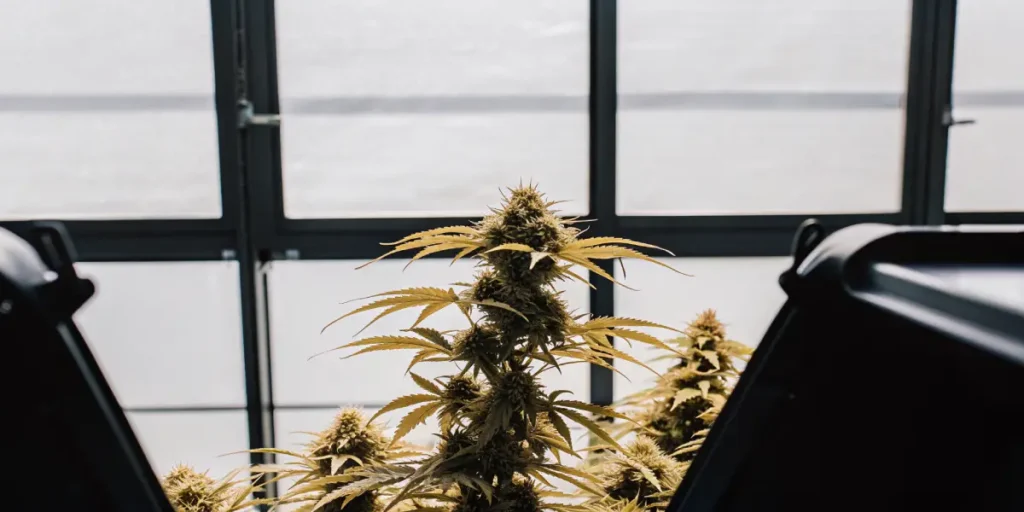
Improving Cannabis Yield Through ROS
Knowing how to improve cannabis yield through ROS can be a game-changer for growers. By harnessing the power of ROS, you can encourage your plants to produce more cannabinoids and increase overall yield. This involves a delicate balance of stress factors to ensure plants are pushed to their optimum capacity without being overwhelmed.
Experienced growers often use a combination of techniques to control ROS levels. This might include adjusting temperature or humidity levels, as well as introducing mild physical stressors like wind or pruning. Strains such as Gorilla Glue 4, also available at Blimburn Seeds, are known for their resilience and ability to thrive under these conditions when ROS is managed effectively.
Improving cannabis yield through ROS not only involves manipulating environmental factors but also requires careful monitoring and adjustment. By keeping a close eye on plant responses, growers can fine-tune their approach, ensuring that stress remains beneficial rather than detrimental. This proactive management is key to achieving the desired increase in yield and potency.
Additionally, the potential to improve cannabis yield through ROS opens up new possibilities for breeding and genetic selection. By identifying strains that respond particularly well to ROS manipulation, breeders can develop new varieties that are optimized for high-stress environments, offering even greater potential for increased cannabinoid production.
FAQs
Can ROS Improve Cannabinoid Production in All Strains?
While ROS can be beneficial in enhancing cannabinoid production, not all strains respond the same way. Some strains are naturally more resilient and can handle higher levels of stress, making them more suited to ROS manipulation. Others may require a gentler approach to avoid damage.
First-time growers should start with hardy strains like Northern Lights or Blue Dream that have a proven track record of responding well to controlled stress. More experienced growers might experiment with other strains, always monitoring the plant’s response to ensure optimal health and yield.
Knowing the genetic basis for how different strains respond to ROS is crucial. Research into the genetics of cannabis plants can provide insights into which strains are more likely to benefit from ROS manipulation. This knowledge can guide growers in selecting the right strains for their specific cultivation conditions.
Moreover, while exploring whether ROS can improve cannabinoid production in all strains, it’s important to consider the end use of the cannabis. For example, strains grown for medicinal purposes might require a different approach than those grown for recreational use. Tailoring ROS management to the specific goals of cultivation can help achieve the best results.
How Do I Know If My Plants Are Producing Too Much ROS?
Monitoring your plants for signs of excessive ROS is crucial. Symptoms of too much ROS include wilting, yellowing leaves, and stunted growth. If you notice these signs, it might be time to dial back the stressors and allow your plants to recover.
Regularly checking your plant’s health and adjusting environmental factors can help maintain the right balance of ROS. Keep an eye on how your plants are reacting to changes and be ready to make adjustments as needed to ensure they are thriving.
Using technology like sensors and automated systems can aid in monitoring ROS levels and plant health. These tools can provide real-time data, allowing growers to respond quickly to any signs of stress. By leveraging technology, growers can maintain optimal conditions for cannabinoid production without risking plant health.
Additionally, knowing the biochemical pathways involved in ROS production can provide deeper insights into how to manage these molecules effectively. This knowledge can lead to more precise control over ROS levels, ultimately improving cannabis yield through ROS management.
Which Environmental Factors Influence ROS Levels?
Several environmental factors can influence ROS levels in cannabis plants. Light intensity, temperature, water availability, and nutrient supply all play a role in ROS production. By tweaking these variables, growers can encourage or reduce ROS levels to enhance cannabinoid production.
For example, increasing light exposure can boost ROS production, but it must be done carefully to avoid burning the plants. Experimenting with these factors can lead to significant improvements in yield and cannabinoid content, especially with strains like Gorilla Glue.
The interplay between these environmental factors and ROS is complex, and it requires a nuanced knowing to manage effectively. For instance, while high light intensity can increase ROS, it might also increase the plant’s need for water and nutrients, requiring a holistic approach to cultivation.
Furthermore, the timing of stress application can significantly impact results. Knowing when to introduce stress for optimal ROS production can enhance the benefits while minimizing risks. This strategic approach is essential for maximizing the potential of ROS role in cannabis cultivation.
Are There Risks Involved in Using ROS to Boost Cannabinoid Production?
While using ROS to boost cannabinoid production can be highly effective, there are risks involved. Overstressing your plants can lead to irreversible damage, reducing yield and quality. It’s essential to find the right balance to avoid harming your plants.
Starting with small adjustments and gradually increasing stressors can help mitigate these risks. Keep a close eye on your plants and be prepared to make changes if you notice any adverse effects. With careful management, the benefits of using ROS can outweigh the risks.
Knowing the risks and rewards of using ROS to enhance cannabinoid production is crucial for successful cultivation. By being aware of potential pitfalls, growers can take proactive steps to avoid them, ensuring that their plants remain healthy and productive.
Besides, collaborating with other growers and sharing experiences can provide valuable insights into managing ROS effectively. This community knowledge can help identify best practices for balancing stress and avoiding the negative impacts of ROS, leading to more consistent and successful harvests.
Can ROS Affect the Flavor and Aroma of Cannabis?
ROS not only influence cannabinoid production but can also affect the flavor and aroma of cannabis. Stress-induced changes in terpene profiles can lead to unique and desirable flavors that might not be present under normal growing conditions.
Growers looking to enhance the sensory qualities of their cannabis might experiment with ROS manipulation. By carefully adjusting growth conditions, you can coax out new aromas and flavors, adding value to the final product. Strains like Blue Dream are known for their distinct flavor profiles, which can be further enhanced through controlled stress techniques.
The potential for ROS to affect the flavor and aroma of cannabis opens up new avenues for product differentiation. By experimenting with ROS levels, growers can create unique strains with distinct sensory characteristics that stand out in the market.
Furthermore, knowing the relationship between ROS and terpene synthesis can lead to more targeted approaches to flavor enhancement. By leveraging the knowledge of how ROS affects cannabinoid synthesis and terpene profiles, growers can produce cannabis products that appeal to a wide range of consumers.


